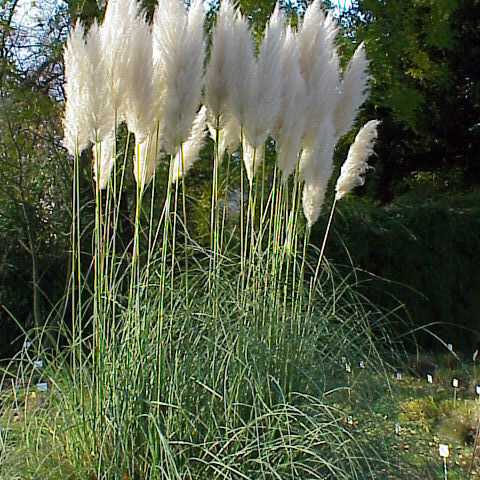Perennial, tussock-forming, gynodioecious (bisexual and female plants). Culms often tall. Leaf blades mainly basal, linear, flat or convolute; ligule a line of hairs. Inflorescence a large plumose panicle. Spikelets laterally compressed, with 2 to several florets, disarticulating above glumes and between florets; rachilla villous; glumes longer than lowest lemma, sometimes as long as spikelet, narrow, membranous, 1-veined; floret callus linear, hairy; lemmas lanceolate to ovate, hyaline, 3–7-veined, villous on back, entire or 2-dentate, awnless or with a terminal awn; palea glabrous or sometimes pilose; female plants with sterile anthers present. Lodicules hairy.
Spikelets several-flowered, the rachilla disarticulating near the base of each seg-ment forming a stipe to the floret, the lower part of the stipe glabrous, the upper part covered with long silky hairs; glumes narrow, long-acuminate, 1-nerved, longer than the first floret, sometimes longer than all the florets (in our species); lemmas 3-nerved, villous with long silky hairs, long-acuminate, tapering to a thin fine point, or awned from between the thin slender teeth of a bifid apex; palea about as long as the lemma.

